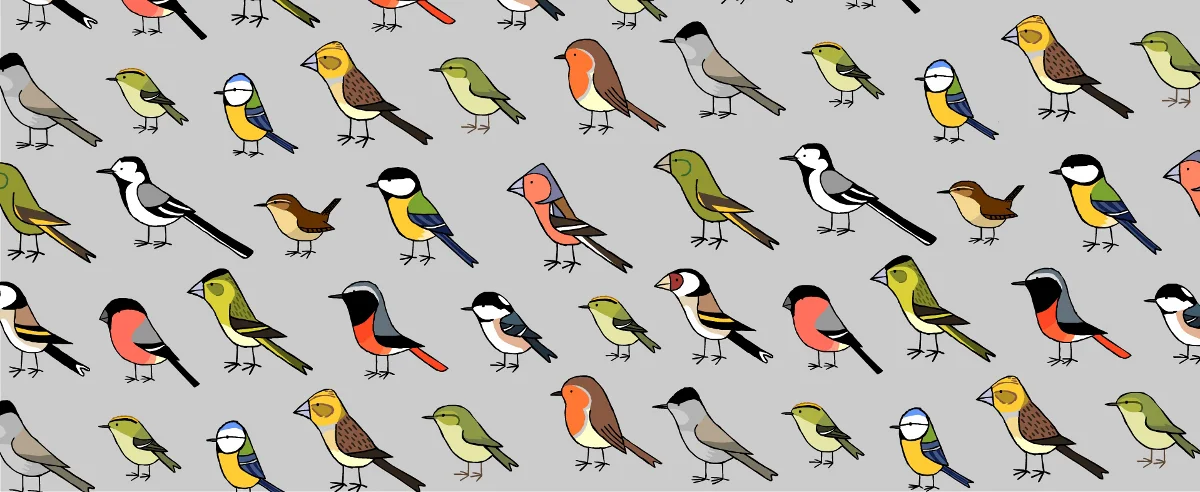A Leucistic Cardinal
It seems like snow on the ground always brings new visitors to our feeders that we might not be familiar with. This last snow’s oddity was a familiar bird, but with an unusual twist. A partially leucistic female Cardinal! Not to be confused with albinism, which results in a total lack of pigment, leucism is a condition that can occur in animals that causes a reduction of pigmentation. It is caused by a defect in the cells responsible for pigment. There are two types of leucism; full and partial. In full leucism, there is a reduction in all pigments causing the animal to appear paler than normal. In partial, only some of the animal is affected, as is the case with this female cardinal. The Cornell Lab of Ornithology has an excellent article on the differences between different pigment deviations that I will link to here.
Partially Leucistic Female Cardinal
Photo Credit: Eli Haislip
Purple Sandpiper
In addition to the partially leucistic Cardinal, I also had numerous White-throated Sparrows, a Song Sparrow, Dark-Eyed Juncos, House Finch, Purple Finch, Goldfinch, Mourning Doves, Carolina Chickadees, Carolina Wrens, Tufted Titmice, White-breasted Nuthatch, Downy Woodpecker, Brown-headed Cowbirds, and Eastern Bluebirds at the feeders during the snow. These are all fairly typical birds that you can expect to see this time of year, depending on the habitat in which you live. However, there has been a much more noteworthy visitor to Davidson County this past week. At Snow Bunting Peninsula on Old Hickory Lake, a Purple Sandpiper has been consistently reported over the last week. The Purple Sandpiper was quite the unexpected surprise! These members of the sandpiper family have the honor of being the northernmost nesting shorebird, with breeding ranges as far north as Baffin Island, Iceland, Greenland, and the High Arctic. It is rare to spot these birds this far inland, even in their normal winter range of the coasts of Newfoundland in the north to the Carolinas in the south. I decided to make the trek from Bellevue this morning all the way up to Old Hickory Point (aka Snow Bunting Peninsula) on Old Hickory Lake in hopes that the bird would still be around. As I pulled into the parking area, I saw a group of individuals standing around with cameras and tripods, I knew I was in luck! I carefully made my way over to where the group was milling around, and there it was. An unassuming, chunky, robin sized bird, it stayed within 4 feet of the water’s edge the entire time I observed it, (About 30 minutes) while using its elongated bill to probe the mud and grass for worms and other small invertebrates. The industrial area around the Old Hickory Dam/ Old Hickory Lock just north of Madison is a far cry from the rugged beaches of Iceland, where they can be found year round, but this adaptable little wanderer seems to be doing just fine.
Purple Sandpiper
Photo Credit: Eli Haislip
The Resiliency of Songbirds
While on the subject of birds adapting to different situations, all too often songbirds are underestimated and considered extremely delicate creatures in need of our help. The truth is they are quite resilient and often able to adapt to situations in their world. Habitat change and loss is the real danger to them. For several months now I have been watching a White-breasted Nuthatch visiting my feeding stations. When I first noticed this bird I immediately recognized that it was moving awkwardly, as if its balance was off, or was sick. This bird continued to visit feeders and I would see it most days when I had time to watch. My concern was the bird was sick but seeing it through binoculars revealed it was missing a leg. I really focused on this bird over the next few months and observed how it adapted to its situation. It could no longer cling to a tree trunk in the familiar nuthatch way, but would approach the feeding stations and fly upward toward a twig on a tree limb and grab it, hanging upside down to keep an eye on the platform feeder where it seemed comfortable feeding, waiting for an opening. It seemed reluctant to go to the feeder while many birds were there. Many months later this one-legged Nuthatch continues to visit my feeders and, aside from its missing leg, carries on as if unaware of its handicap. I will continue to keep an eye out for this Nuthatch and report back in a few months.
One-legged White-breasted Nuthatch
Photo Credit: John Carreau









